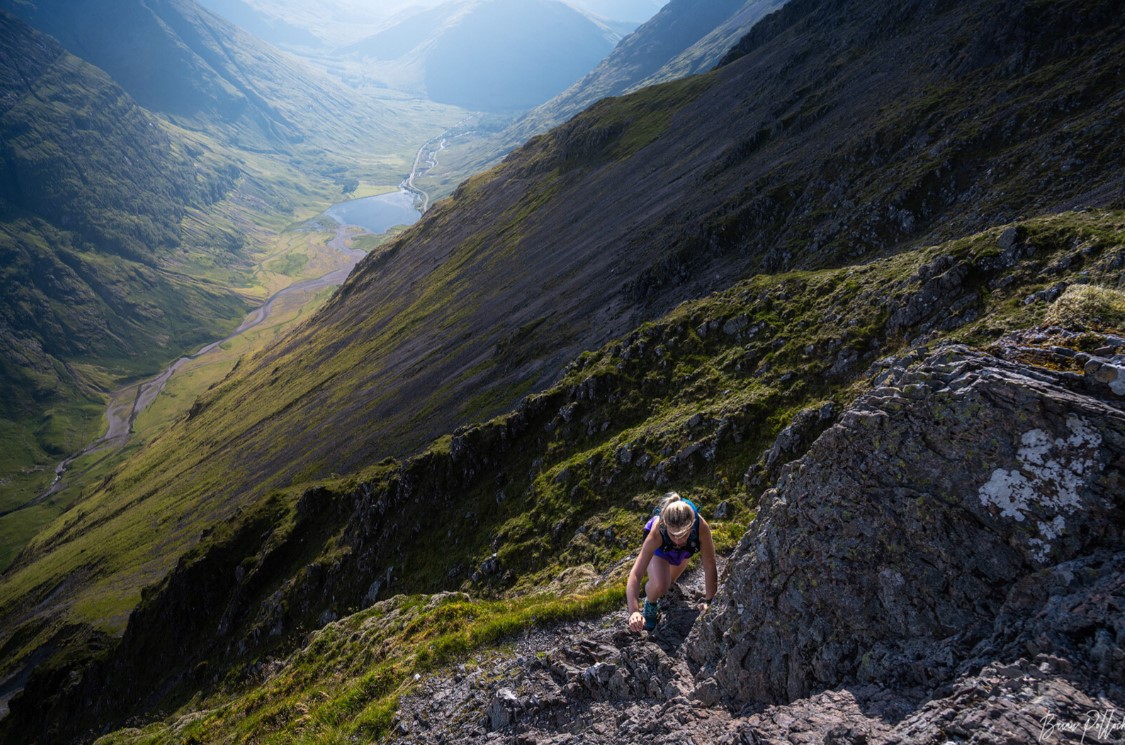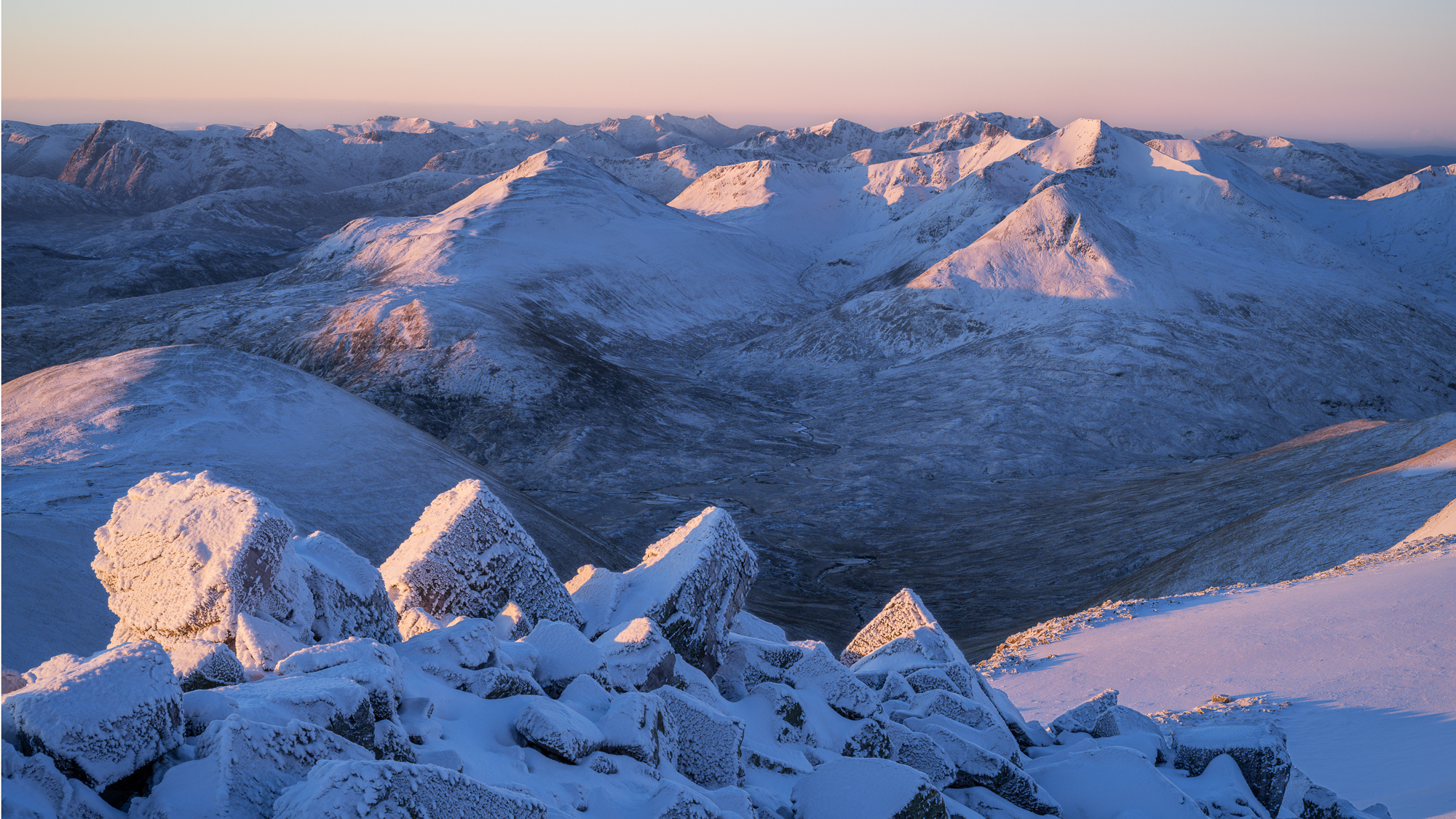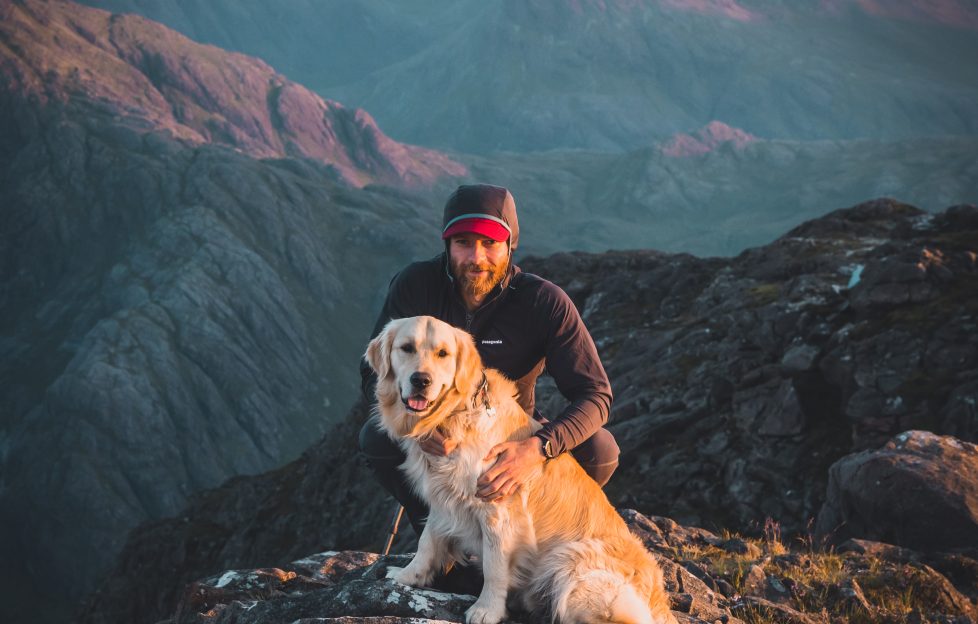Keen mountain climber Brian Pollock speaks about his landscape photography, as featured in the February 2024 edition of Scottish Field magazine.
I was born near Glasgow in the west of Scotland, where I have lived more or less my entire life. My early childhood was typical for a boy amongst the last generation to remember knocking on doors to see if your friends were coming out (before mobile phones were a thing). We climbed trees, built ‘dens’ and generally found ways to get into trouble.
If you asked if I was artistic, I’d say no. I did dabble in drawing at a young age but lacked the interest (or discipline) to take it forward into my teens. Photography wasn’t remotely on my radar until far later in life. My only exposure to it was from family holidays, when my dad would bundle us together for a picture and I’d refuse to smile – to this day I’m not totally comfortable in front of the lens, which is perhaps an insight into how I ended up behind it.
I did well at school. I went to university in Glasgow and studied to be a lawyer – it sounded more interesting (or less dull) than an accountant. My post-school/ pre-adult life was also typical of a youth from the west of Scotland, which is to say, a few hazy years of work, drink, rinse, repeat.

Brian Pollock features in the February edition of Scottish Field. [Credit: Brian Pollock]
Those years certainly had their moments but, looking back, I am a very different person now. Life changed for me at the start of my twenties, when I discovered climbing – not to be confused with walking (up hills or otherwise). Before climbing, I had enjoyed forays into the outdoors but always, I felt, as a spectator. Never far from a car or café. In it, but not part of it.
Climbing changed my whole perception of the outdoors and my place in it. Suddenly, the hills were no longer something to be appreciated in the abstract. Holding onto a rock face a hundred feet above solid ground, heading up, I experienced a new connection with this once foreign place, a connection born from the feeling of having ‘skin in the game’.
Over the next decade climbing dominated the vast majority of my spare time. It became both the means and the reason to move in the hills. It was my passion and obsession. Everything else was a mere distraction.
To this day, climbing remains very important to me, but life is compromise and, ultimately, there is more to it than any one thing. So I grew up (a little), met a girl, bought a dog and so began my thirties and the beginning of my new passion, photography.
Back-tracking a little, taking photographs technically started with climbing. I was seeing new places and doing new things. So I bought a camera, a Panasonic micro four-thirds camera with a power zoom do-it-all lens, ultimately lost and replaced with a second-hand Ricoh GR – which I still own and love.
Most of my photos were of my friends climbing, either looking up (‘bum shots’) or down. I’d make an album every season and post it on Facebook or on ‘UKC’ (UK Climbing). At that time, it was really more about the climbing than the photos. That started to change a little when I received some positive feedback, including, a much coveted UKC ‘photo of the week’.

[Credit: Brian Pollock]
In late 2019, I got a notion to upgrade to full frame and bought a Nikon Z6 – my first ‘proper camera’ (ultimately replaced with its bigger brother, the Z7; the former laid to rest in a boulder field at the foot of Caisteal Abhail, Isle of Arran). My ‘big camera’ was now too big to take climbing and so I found myself looking for new subjects on which to turn my new toy. Initially, our new golden retriever puppy, Harris, bore the brunt of my new hobby. This coincided with lockdowns during the pandemic so, really, there was little choice. Soon I was taking my camera everywhere and, eventually, with the easing of Covid restrictions and legs in need of stretching, we (my wife Kirsty, Harris and I) returned to the hills.
During lockdown, starved from the lack of time outdoors and looking for inspiration, I came across the photography of Alex Nail and, particularly, his seminal book North West. It may come as no surprise that Alex’s photography has heavily influenced my own. But that is only to say, I found a natural kinship with his pursuit of realism and celebration of the landscape for what it is. To me, Alex’s photography stands out as much for what it isn’t as for what it is. The ‘magic’ which captivates me when I leaf through North West is the absence of the photographer, leaving only the subject. If the ultimate object is to transport the viewer, Alex certainly comes as close to achieving that as I have experienced. And so, the benchmark was set and I have been pursuing it ever since.
Although I have only been taking landscape photos for around three and a half years at this point, motivation to get out with my camera has never been wanting. Safe to say, I have put a lot of time and effort into my photography, measured in miles walked, summit camps, sunsets and sunrises.

Credit: Brian Pollock
I credit my progression in photography not to any particular talent, but to genuine enthusiasm for and joy in the process. Take away the journey and, to me, the photo is meaningless. That is not to say I can’t or don’t appreciate others’ photography, to which I have no personal connection – I do – but the joy of my own photography is inextricably linked to everything which comes before the shutter is clicked.
Perhaps contrary to the modern trend, I haven’t felt the draw of the move from grand landscapes to intimate work. Whilst I enjoy abstract and intimate photography, so long as the end result continues to play second fiddle to the process, I continue to be motivated to experience and photograph the places and subjects which inspire me most. That is, undoubtedly, the hills of the Scottish Highlands.
That approach continues to serve me well and I am as motivated today as I was when I started out. If I have grown as a photographer in any way (beyond the basics, skill in post-processing, etc.), it is in that I have learned to care less about ‘getting the shot’. The hills aren’t going anywhere and, hopefully, neither is my enthusiasm to be amongst them.
That enthusiasm continues to be fuelled by Alex’s work, that of the legendary Joe Cornish, and many peers operating in Scotland who produce work far more impressive than my own. To name a few, Kenny Muir and his stunning work from Glen Affric; Richard Fox, who produces peerless work from the Trossachs and surrounding areas; James Roddie, who is surely one of the most talented professional wildlife and landscape photographers working in Scotland; and Simon Atkinson, whose work has blown my socks off more than a few times in the last few years. Further afield, I can’t not mention Magnus Lindbom, whose portfolio from Sarek (Sweden) is of the highest standard of any mountain landscape photographer I know – awesome in the truest sense of the word.
To find out more about Brian Pollock’s photography, visit his WEBSITE. Alternatively, follow him on Instagram @brianpollockphoto.

[Credit: Brian Pollock]
TAGS


